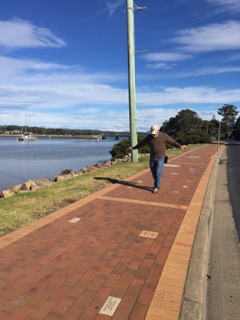What is BPPV?
BPPV (Benign Paroxysmal Positional Vertigo) is a common condition, affecting 2.4% ofindividuals at some time in their life. BPPV is a condition of the inner ear where crystals that belong in one area migrate to another area, called the canals, which causes an over stimulation of the nervous system resulting in vertigo (spinning) amongst other symptoms. It’s name means:
Benign - not life-threatening
Paroxysmal - occurring as brief, sudden spells
Positional - triggered by certain head positions or movements
Vertigo - A false sense of rotational movement.
Do I need a scan if I have BPPV?
Not usually. Luckily, BPPV is usually straightforward to diagnose and can be done by undertaking special positional changes that cause a very specific response by the nervous system. The response is directly related to the particular ear and canal within the inner ear that has the problem. It does not generally require investigations such as blood tests or scans. Occasionally, more specialized testing may be warranted where a clinician may wish to rule out less common causes of vertigo.
Luckily, BPPV is usually straightforward to diagnose without requiring investigations such as blood tests or scans.
There are some situations, however, where a clinician will need to rule out other causes of vertigo; further investigation may be required in these cases.
What does BPPV feel like?
The “garden variety” of BPPV will feel like this:
Vertigo (often with nausea and sometimes with vomiting) is triggered by movement of the head. There may be a brief delay after moving the head, then the vertigo will last less than 2 minutes.
In most cases patients will see or feel the room spinning, though for some it may be a more vague dizziness or sense of being off-balance.
Symptoms come on suddenly. They are often first noticed turning in bed or when getting out of bed in the morning, though they can come on at any time.
Once an episode of vertigo has passed, it will stay settled until the head is moved.
There may also be vague symptoms such as tiredness, fogginess in the head, and blurry vision which may linger after the vertigo episode has passed.
There will not be any change to hearing, nor any other neurological symptoms.
What will my GP do if I have an episode?
When visiting your doctor, they may do a number of assessments. Among these, they may look in your ears, test your eyes and perhaps test your balance. They may perform several special tests to exclude any significant illness. On occasion, they may do positional testing, though this is not common. Often GP’s will make a diagnosis by your history and symptoms, though this is not the gold standard.
Should I be assessed with positional testing?
Yes, this is the gold standard! The current guidelines on assessing suspected BPPV were published in 2016 (ref 1). They recommend:
In-clinic diagnosis using the Hallpike-Dix and Supine Roll tests. These tests involve moving your head and, or body into particular positions and watching for specific eye movements (nystagmus) to occur. This will reproduce your symptoms if you have active BPPV and will often cause vertigo and may make you feel nauseated, but, it is important for accurate diagnosis and to guide treatment.
Clinicians should differentiate BPPV from other types of dizziness and vertigo.
At Bespoke Physiotherapy, we use special Frenzel goggles that record your eye movements during testing. This allows us to very accurately diagnose BPPV, as sometimes the eyes’ movements may be subtle and brief.
Generally, clinicians should not refer for radiographic imaging or vestibular function testing in these patients, unless there are additional signs/symptoms of other conditions which would require these investigations.
By being assessed and diagnosed quickly and accurately, patients can avoid unnecessary scans and reduce the burden on the healthcare system and enables patients to have prompt and effective treatment much sooner.
Vestibular physiotherapist can treat you very effectively for BPPV. With a skilled practitioner, 90% of BPPV cases will resolve after 1-3 treatment sessions (2). Vestibular physiotherapists are highly trained at assessing the vestibular system, neck, balance, and other related parts of the body and brain. They will test you to help rule out other conditions and can provide valuable input should you need to see a neurologist, otolaryngologist (ENT) or other specialist.
So, if you have been diagnosed with BPPV by your GP or specialist or if you have symptoms that sound like those of BPPV, seek out an excellent vestibular physiotherapist, like ours here at Bespoke Physiotherapy, and start feeling better, sooner.
Once a diagnosis of BPPV is confirmed, a vestibular clinician can then commence treatment right away. In a skilled practitioner, 90% of BPPV cases will resolve after 3 or fewer sessions(2)!
References:
(1) Battacharyya N, et al. (2017). Clinical Practice Guidelines: Benign Paroxysmal Positional Vertigo (Update). Otolaryngology-Head and Neck Surgery. 156(3_suppl): S1-S47. https://journals.sagepub.com/doi/10.1177/0194599816689667
(2) Parnes LS, et al. (2003). Diagnosis and management of benign paroxysmal positional vertigo (BPPV). CMAJ. 169(7):681-693





























